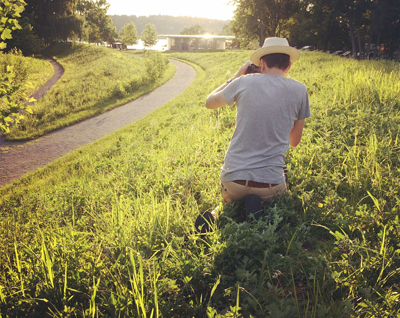Introduction by SCOTT GEIGER, photos by JAMES EWING.
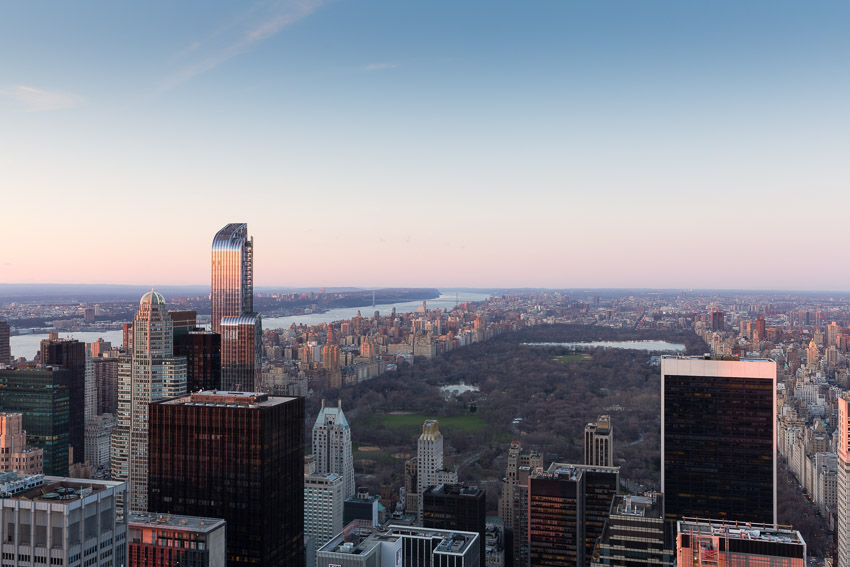
A couple years ago, on the verge of the global collapse, structural engineer Guy Nordenson did an interview with me for a literary monthly, The Believer. The magazine’s title quote ran, “The tall building, as a type, is exhausted.” You could no longer put together a tall office building or a mixed-use tower in a new way, Nordenson felt. World Trade Center Tower One or maybe the CCTV Building in Beijing, depending on your architectural orientation, closed out the skyscraper play, at least in terms of engineering and architectural innovation.
These last two years, though, exotic forces in global finance have conspired to construct in the Manhattan street grid a radically new tall building typology. The super towers, or “billionaires’ beanstalks,” as New York Magazine’s architecture critic Justin Davidson described them, are stacks of full-floor loft apartments (sometimes duplexes) rising into the blue. The forthcoming 111 West 57th Tower, featured on its architect’s website, shows the sheer building arising from a tiny claw hold in Manhattan.
To realize such super towers, their developers and architects have to delicately escort them through New York City municipal agencies and community boards. They must also sell the apartment units, often to prospective owners who do not live in New York City or even in the United States. Architectural renderings do this work. These are digital collages of one or more real photographs, upon which is imposed a scintillating computer-generated image produced from three-dimensional architectural design software. There are whole design agencies, like rendering pioneers DBOX, who specialize solely in the production of these very high-resolution illusions for use in real estate marketing.
Over the summer I learned that Brooklyn architectural photographer James Ewing has regular commissions to document the urban fabric surrounding Manhattan commercial developments. He sometimes even photographs the open airspace around future super towers. To make such images, Ewing accessed the terraces and mechanical rooms of neighboring high-rise towers, waiting long hours for the weather to clear, the daylight or the darkness to settle just so. After studying architectural renderings for a few years now, I’ve concluded that their appeal comes not from their dazzling subjects but from the everyday real upon which the proposed architecture trespasses.
Ewing shot the images below to serve as backgrounds to architectural renderings, which will tease out a counterlife to the city. A knowing consciousness animates the photographs, I feel. His views frame a cumulative, sculptural Manhattan. No sign of street life. Instead, this subjectivity sees a geometric landscape of facades and windowwalls—each building nothing so exotic or radical as the crystallization of market forces past. Especially dramatic to see is the form of the cumulative city juxtaposed to the Hudson and East Rivers at its edge. To the subjectivity within these images, super towers feel only inevitable, the next phase in New York City’s continuous and speculative growth under the sky.
—Scott Geiger
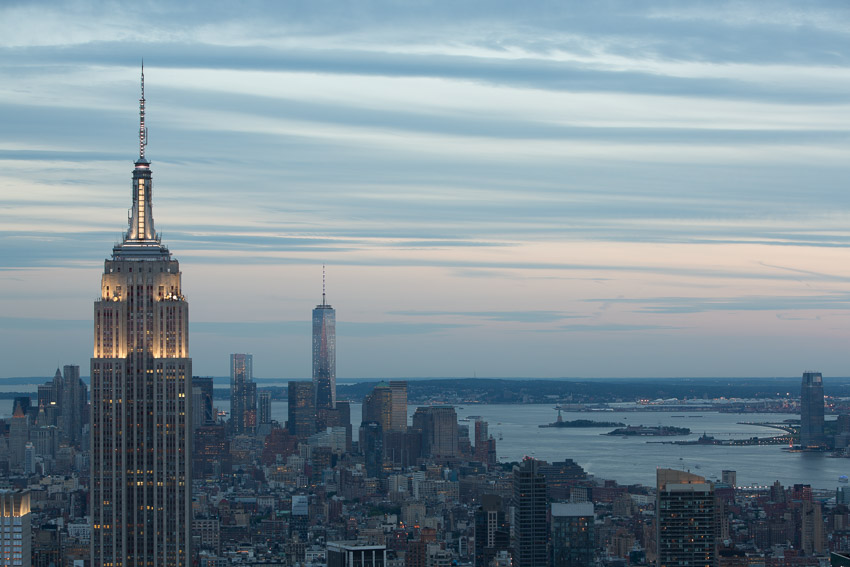
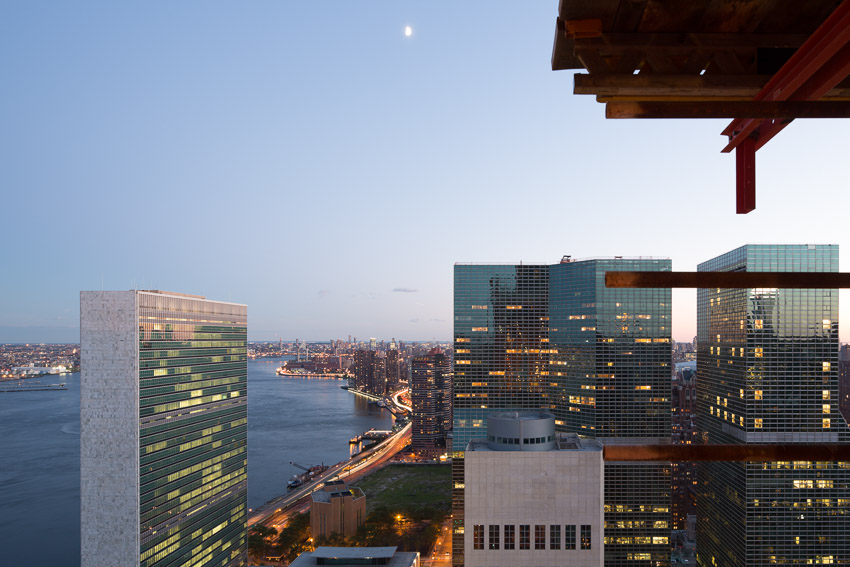
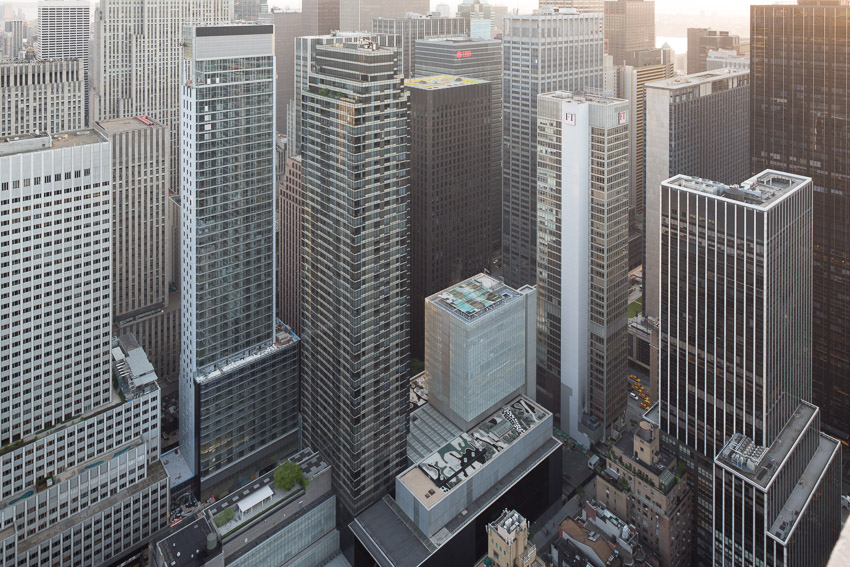
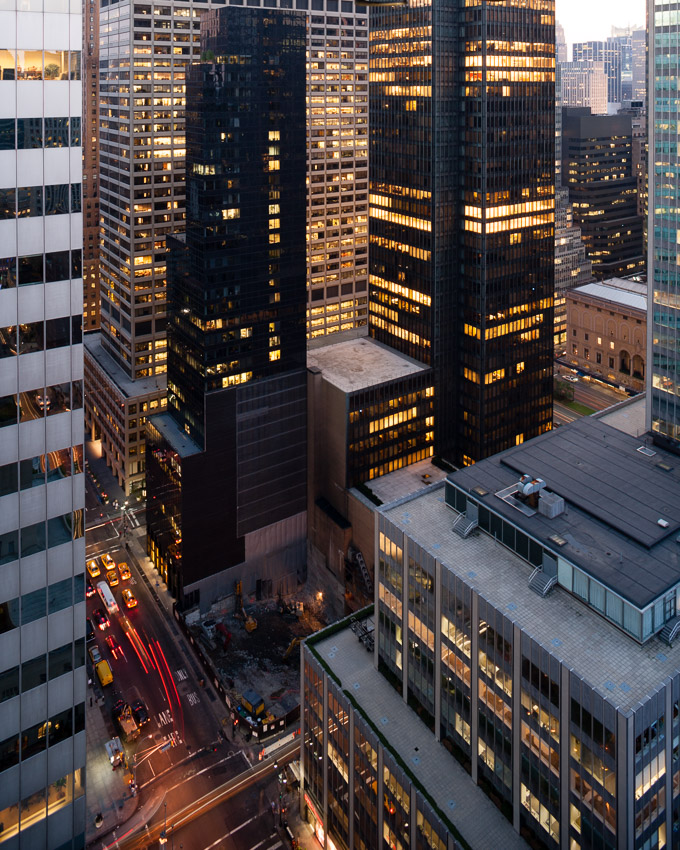
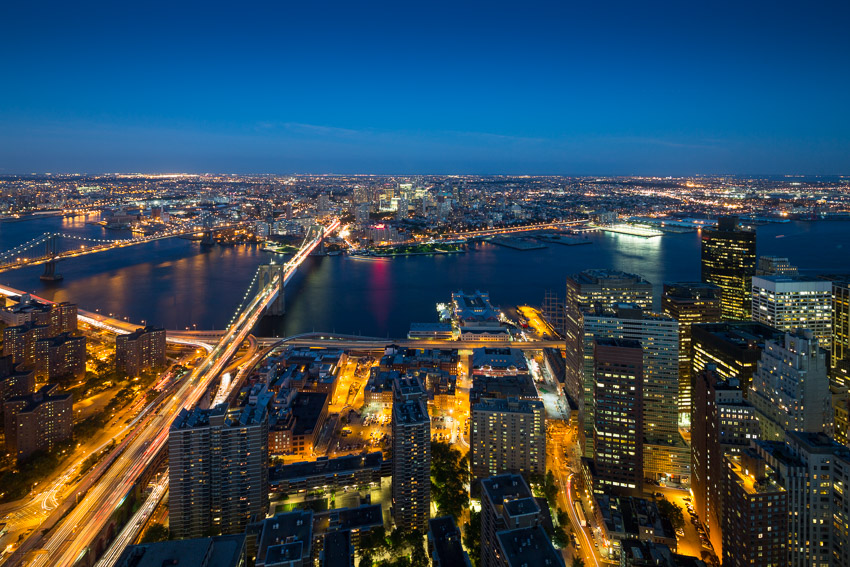
Scott Geiger is the Architecture Editor for The Common.
Photographs by James Ewing.
